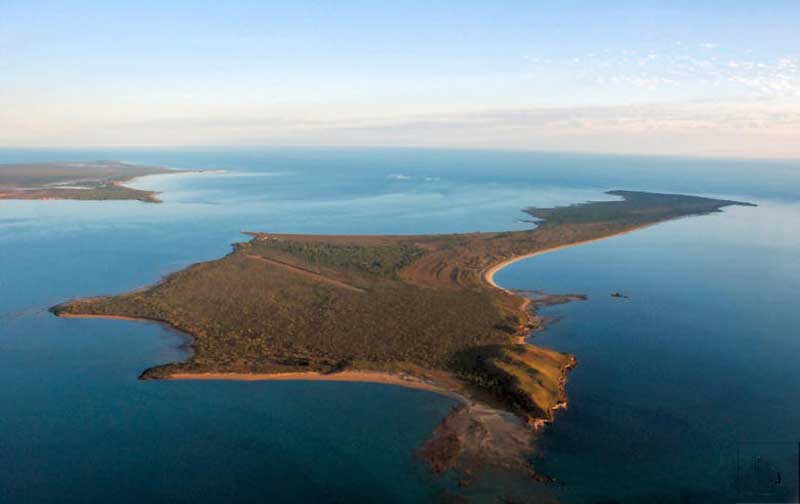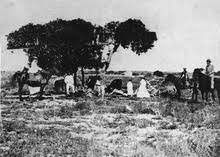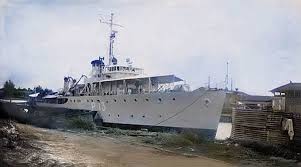
Sweers Island is an island in the South Wellesley Islands in the Gulf of Carpentaria, Queensland.
The island was given its European name by explorer Matthew Flinders on 16 November 1802 after Salomon Sweers, a council member of the East India Company at Batavia who was one of those who instructed Abel Tasman to explore the Gulf of Carpentaria in 1644. Flinders was circumnavigating the Australian continent in the sloop HMS Investigator to map the coastline and establish if Australia was a single island or whether there were two or more islands (the Gulf of Carpentaria and the Great Australian Bight were suspected to be the entrances to straits between the islands).
Possible Dutch inscription:’ Lowy 1781’ on Investigator Tree?

The Investigator Tree, so named after Matthew Flinders’ ship HMS Investigator, is an inscribed tree currently on display in the Queensland Museum. Before being accessioned into the Queensland Museum’s collection in 1889, the Investigator Tree grew on the western shore of Sweers Island in the southern Gulf of Carpentaria. The tree’s “Investigator” inscription, attributed to Flinders (1802), provided the catalyst for future and varied forms of European inscription making on Sweers Island, including a contentious additional “Investigator” inscription on the Investigator Tree carved by Thomas Baines in 1856. Previous researchers have speculated that Baines’ second “Investigator” inscription has caused the faded original “Investigator” inscription to be misinterpreted as either a Chinese or Dutch inscription predating Flinders’ visit to Sweers Island.
The study below presents the undertaking of a physical examination of all markings on the Investigator Tree, including a second portion of the tree located at the Queensland Museum since 2009. In combination with a review of the archival and historical record, findings provide alternative interpretations regarding the (28) inscriptions to address outstanding questions. Archival documents demonstrate that there were at least three inscribed trees on Sweers Island. This paper also revisits the possibility of there once being pre-Flinders inscriptions on the Investigator Tree.
Trading post with Batavia
Robert Towns established Burketown and the mainland of Far North Queenslandin 1865 as a base for his extensive holdings in the Gulf Country. Burketown’s development was limited due to the extent of tropical diseases suffered by its inhabitants. When the ship Margaret and Mary arrived in Burketown from Sydney carrying a fever (possibly malaria), the majority of those on board died at Burketown. In the belief that Burketown was inherently unhealthy, William Landsborough evacuated most of the survivors to Sweers Island for 18 months, with only a further two people dying. Towns and Co then traded wool, tallow, hides and skins between Sweers Island and Batavia in October 1868.
There is a small private resort owned via a perpetual lease on Crown Land, being the site of a township dating from the 1800s, with the only residents being the owners and workers at the resort.
Source: Wikipedia
Salomon Sweers
Born in Nijmegen on June 15, 1611, and died in Amsterdam on March 2, 1674.
His father, Aernout Sweerts, lost his position in the Nijmegen council, a Remonstrant stronghold, due to his Remonstrant sympathies during the political upheaval by Maurice of Orange in 1618. However, he managed to regain his position after Maurice’s death. Around 1628, the family moved from Nijmegen to Amsterdam. At the age of 17, Salomon joined the VOC (Dutch East India Company) as a clerk or bookkeeper. In 1632, he departed for the East Indies along with Antonie van Diemen, who would become his protector.
In 1640, he undertook a second journey to Batavia after being appointed an extraordinary councillor of the Indies. Together with Cornelis Witsen, he commanded the fleet. Sweers, along with Antonio van Diemen, Cornelis van der Lijn, and Joan Maetsuycker, was involved in the preparation of Abel Tasman’s two expeditions.
In 1649, he purchased a property on the Keizersgracht, called The Arms of Nijmegen.
Source: Wikipedia


